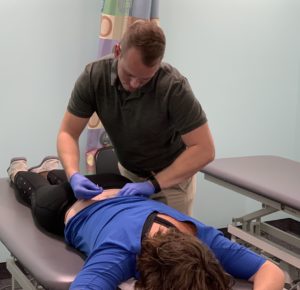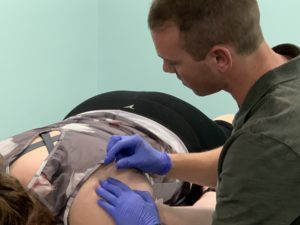A trigger point is a painful spot within a muscle which becomes painful when pressed upon. When pressed on, trigger points feel like “knots” or tight bands in the muscle, and are usually tender. Healthy muscles usually do not contain knots or tight bands and are not tender to pressure.
There is not conclusive research on the definition of a trigger point. However, many characteristics have been observed for decades by researchers all over the world. There are many mechanisms by which we develop trigger points. Some of those mechanisms include poor posture, injury to a muscle, muscle overuse, and repetitive stress overload. Trigger points limit range-of-motion and cause muscle fatigue.
Physical Therapy is a common treatment option for trigger point pain. Physical Therapy addresses trigger points by identifying and treating the primary driver of the trigger point. This is done through trigger point release techniques, massage, dry needling, therapeutic exercise, and posture re-education. If you are interested in learning how physical therapy can help with your trigger point pain, make an appointment at Harbor Physical Therapy.



